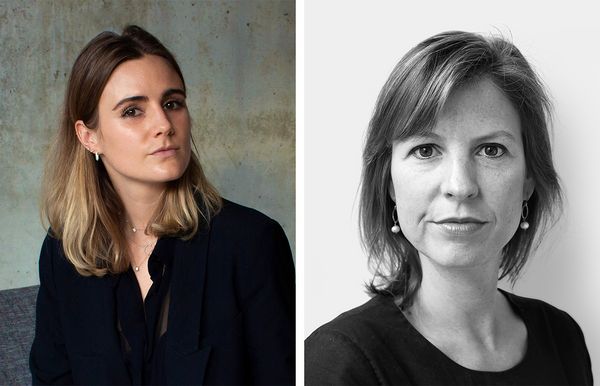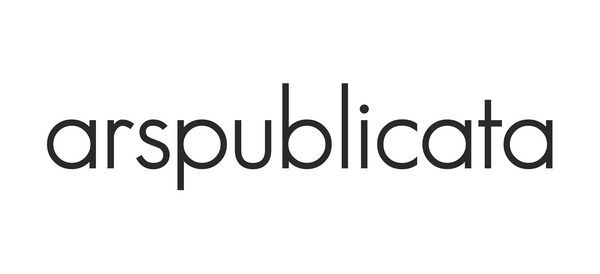Pauline Schellmann, CEO of ars publicata and Anne Schneider-Wilson, Senior International Specialist at Phillips.
To keen admirers and collectors of editions alike, the name Edition Schellmann will be resoundingly familiar, as it’s inseparable from the work of countless major artists of the past half century. Formed by Jörg Schellmann in 1969, the publisher has placed projects with major museums and collections around the globe and has been commissioned to publish and distribute the official prints and objects for documenta X and 11 and the 50th and 51st Venice Biennales. Edition Schellmann has collaborated with many of the most significant artists of the 20th and 21st centuries, including Joseph Beuys, Andy Warhol, Christo, Jannis Kounellis, and Donald Judd, and has published catalogues raisonnés for these artists also.
It is this rigorous and compassionate focus on catalogues raisonnés that led Pauline Schellmann to co-found ars publicata, a project for which she serves as CEO. Entirely free to the public, ars publicata is an online compendium of contemporary fine art editions that has documented the oeuvres of roughly 400 significant artists thus far. The mission of the organization is to showcase the variety and depth of the medium, while providing information that is not only reliable, but completely accessible.
In furtherance of this mission, Edition Schellmann is offering 40 works from its archive in the upcoming Evening & Day Editions auction in London, with proceeds supporting the crucial activities of ars publicata. The works on offer include masterworks by Andy Warhol, Donald Judd, Jenny Holzer, Keith Haring, and many more. They showcase the remarkable collaborative partnerships formed between Edition Schellmann and these important artists.
Below, Anne Schneider-Wilson, Senior International Specialist at Phillips, sits down with Pauline Schellmann to learn what’s next for ars publicata, hear what it was like to grow up surrounded by art and artists, and discover a few of Pauline’s dream projects.
ANNE SCHNEIDER-WILSON: Pauline, it is very exciting to discuss some of the highlights that we will offer at Phillips in our January Editions auction in London. The group is very special as the works are from the Schellmann Archive and will be sold to benefit the ars publicata project. Please tell us a bit more about this fantastic project.
PAULINE SCHELLMANN: It is very special and a bit of a full circle moment, as four years ago we put together an auction with Phillips to raise funds to get the project started!
Ars publicata is an online compendium that makes information on contemporary fine art editions more accessible and counteracts the disorganized and erroneous information one often comes across online.
We document existing catalogues raisonnés and other important publications and above all, provide free access to digital catalogues raisonnés and work listings that we have compiled. We have already digitized some of the catalogues raisonnés my father edited many years ago, such as Beuys: The Multiples, Christo: Prints and Objects, and Donald Judd: Prints and Works in Editions and turned them into extensive databases that are easy to access and navigate. Additionally, we have compiled work listings that document the edition oeuvres of over 200 of the world’s most significant artists — some are simply the result of our own in-house research, others were created in collaboration with the artists’ studios or estates. Lastly, we have built an extensive archive of group portfolios to provide information on these projects that are otherwise hardly documented and often provide important context for the individual works.
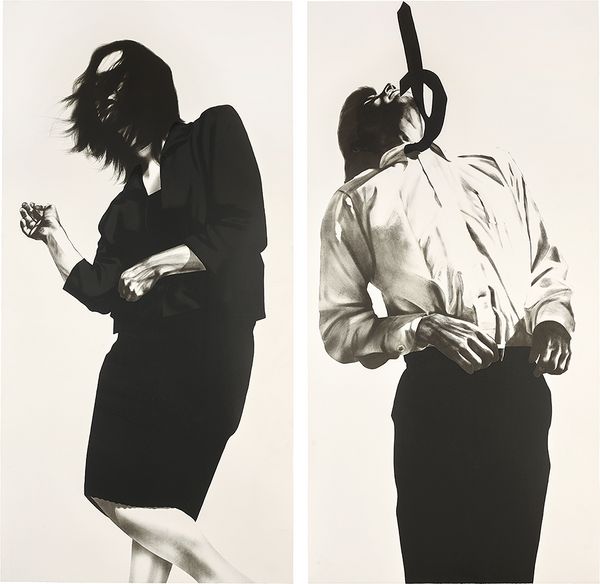
Robert Longo, Men in the Cities (Gretchen and Eric), 1985. Editions & Works on Paper, London.
ASW: How do you think the platform will be an asset to both new and experienced collectors?
PS: With the help of this new platform, you can look up or confirm specific work details — of a work you already own, are looking to sell, plan to acquire, or are simply curious about — and put it into the context of the artist’s other works or perhaps even a group edition.
Or you can browse an artist’s entire oeuvre to get an idea of their edition practice. Whenever I come across an artwork I am particularly interested in, I google the artist’s name and look at the images just to get a visual idea of their practice. But of course, Google images don’t include work descriptions, they are not sorted chronologically, they always include unrelated images, etc. If you’re looking for editions specifically, you will also find that it’s quite challenging to distinguish between actual editions and artist’s editions or ephemera, and you’ll most likely only ever track down a fraction of the artist’s complete oeuvre.
For instance, I could see someone going to the wonderful El Anatsui installation at Tate Modern, falling in love with the artist’s work and wondering whether he’s done editioned — and thus more affordable — artworks. In that case, our work listing would be the best resource to consult as it’s the only extensive documentation on his editions.
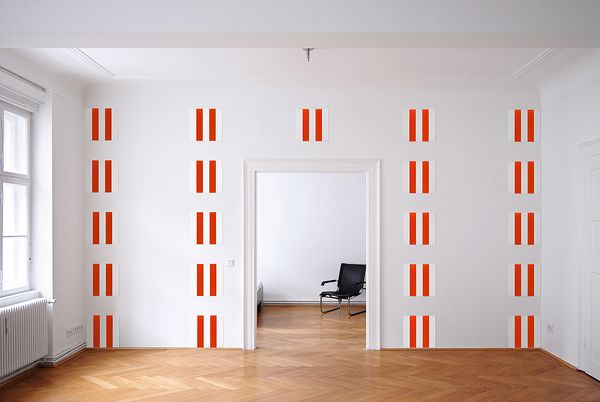
Daniel Buren, 25 Enamel Plates, from Wall Works, 1993. Editions & Works on Paper, London.
ASW: What are the benefits to collectors and researchers of a digitized catalogue raisonné database?
PS: You can access it anytime, anywhere and for free. Which means you don’t have to share your hard copy with colleagues, and you can quickly look something up while you’re on the tube or at an exhibition. The digital catalogues raisonnés also allow for periodical, continuous updates, often contain more information, alternative images, or links to additional sources and are generally easier to navigate and search or filter. With ars publicata being a free resource, it also removed barriers related to financial means, geographic location, physical ability, or lack of institutional affiliation.
Moreover, as researchers, we have found that quite a lot of valuable art historical data is hidden away in archives or at risk of being lost as print materials deteriorate over time or may simply be forgotten. Digitization helps preserve this information for future generations.

Jörg Schellmann and Andy Warhol at Warhol’s studio in New York, 1983.
ASW: How important is it to democratize the sharing of information about editions publications?
PS: When we were still in the process of building the site and convincing people to support the project, I spoke with an artist’s studio who didn’t see the value of ars publicata because, they said, anyone interested in the artist’s editions could simply reach out to their gallery or studio. By “anyone,” they of course meant known collectors and specific people with connections and access. Someone who is new to collecting or an art student probably wouldn’t have the confidence to just call an art gallery and ask for information, and even if they did, I doubt they’d get very far.
Since editions are themselves a democratic medium in that they make fine art available to a wider and more diverse audience, it’s only natural that they should be archived in a format that is also available to everyone. And with a centralized platform like this that provides information on hundreds of different artists as well as historical group edition projects, it really serves as an educational tool too.
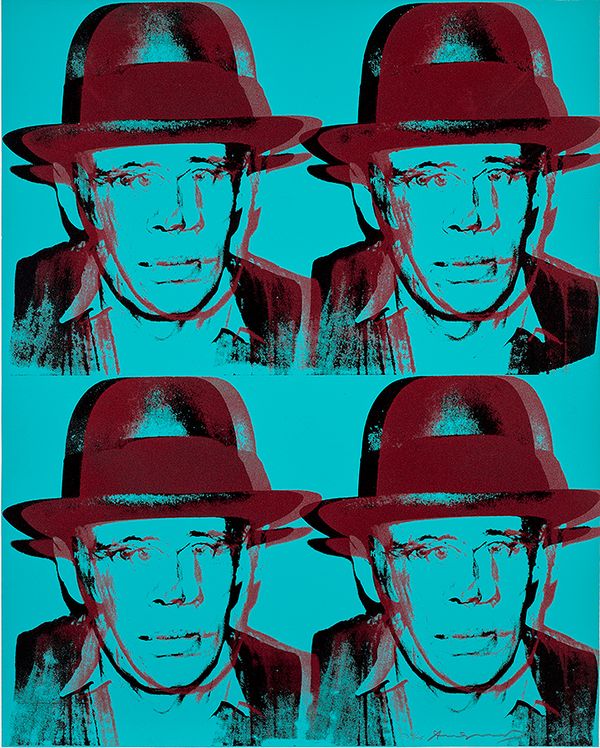
Andy Warhol, Joseph Beuys, 1980–1983. Editions & Works on Paper, London.
ASW: Your father Jörg Schellmann worked with some of the most well-known American artists such as Andy Warhol, Keith Haring, and Donald Judd. Did you meet them as a child? How has it influenced you and how you look at art today?
PS: Unfortunately, I did not get to meet any of the three mentioned artists — that was before my time! But I did have some childhood encounters that were quite formative.
When my father was working on the “Door Cycle” group portfolio, I accompanied him on one of his trips to New York and met Christopher Wool at a print shop where we were taking a look at the first proofs for his Three Women series. I was 15 at the time and remember being fascinated by his casual, paint-splattered appearance, and quietly confident demeanor. He was exactly what I imagined an artist to look and be like, and I thought, this is why my father likes working in this industry, surrounded by these types of people!
But the most significant encounter was and always will be Christo and Jeanne-Claude. When my father went to the artists’ opening of The Pont Neuf Wrapped in Paris in 1985, they introduced him to one of their project assistants: my mother. Thus, our relationship with Christo and Jeanne-Claude has always been a particularly personal and meaningful one and we always made sure to see them whenever we were in New York. They were both such wonderful, warm people and loved the fact that my brother and I were “enfants du Pont Neuf” as they called us.
I think most importantly, having these personal connections to artists and witnessing up close how works are created from a young age has made me more appreciative of the process of creation rather than just the finished artwork itself. As a result, I have just as much admiration for a high-quality edition than I do for a unique painting or sculpture.

Nam June Paik, Born Again, 1991. Editions & Works on Paper, London.
ASW: Since the ars publicata project is an ever-evolving, live website which will be updated with new information all the time, will you have time to focus on new Schellmann editions?
PS: While ars publicata absolutely is a constant work in progress and we continue to both update existing information and add new artists to our roster, I am lucky to have assembled a small but mighty team so that I can focus more on Schellmann Art and new edition projects.
ASW: Tell us about upcoming publishing projects.
PS: We have a number of exciting projects in the works, including some with Joseph Kosuth, Peter Halley, Anselm Reyle, Mona Hatoum, and Shirin Neshat.
ASW: Do you see an appetite from young contemporary artists to produce editions with Schellmann Art?
PS: Some, yes. And they tend to respond very positively to our rich history. But the art world has become a lot more crowded and the artists therefore closely guarded, which makes simply getting in touch with new artists quite challenging.
ASW: Do you have a wish list of artists you would like to work with?
PS: Absolutely, it’s a pretty long list! El Anatsui, Lee Ufan, Jadé Fadojutimi, Rashid Johnson, Jenny Holzer, Pierre Huyghe, Wolfgang Tillmans, and Wangechi Mutu, to name but a few.
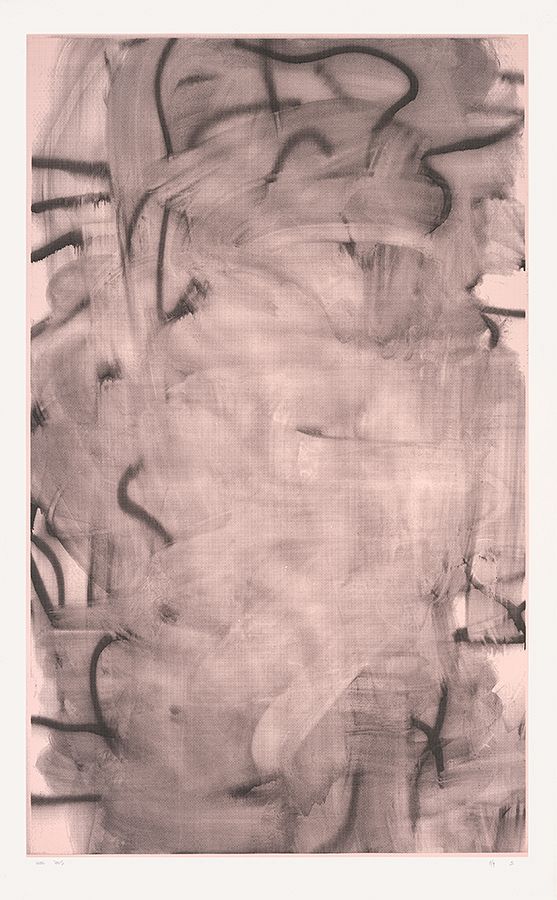
Christopher Wool, Three Women (Dark I), from Door Cycle, 2006. Editions & Works on Paper, London.
ASW: We are offering 40 works from the Schellmann Archive, which one is your favorite and why?
PS: That’s a tough one! But if I had to pick one, it would be Christopher Wool’s silkscreen from Three Women. It’s such a beautiful work and a prime example of the artist’s typical skillful combination of layering, erasing, and blurring, the visible pattern of the screenprint and the overall gestural effect.
But I may be a little biased since I have such fond memories of being at the print shop with the artist and my father when this work was being made.
ASW: Where do you think edition publishing is headed in the future? Where would you like to guide it to?
PS: Although the medium of editions and printmaking has been a well-known and respected tradition in the art world for a long time, it is clear to see that its popularity has risen within recent years, with several galleries and new companies now entering the publishing space.
What I think will be a challenge is making sure that the speed at which works are produced, the ease of purchasing online, and the way these publications are sometimes marketed does not negatively affect the value and recognition of this medium. Rather than a cheaper version of unique artworks, we have always approached editions as a wonderful artistic medium in its own right that complements an artist’s overall practice and encourages them to try new techniques or directions. This means that some editions take years to plan and produce, are not particularly cost-effective or somewhat difficult to sell but have great artistic and conceptual value.
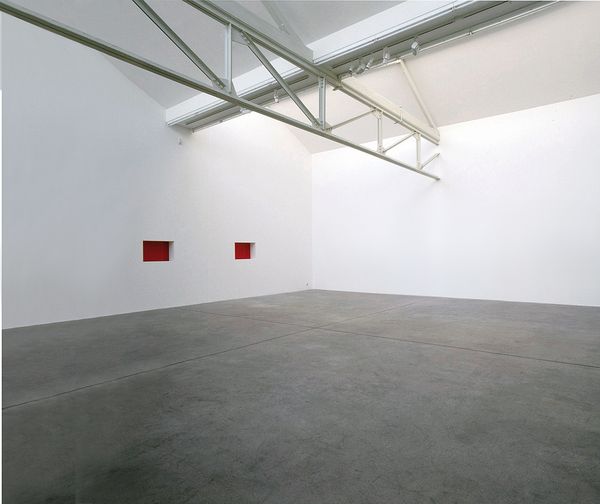
Donald Judd, Untitled (Wall Project), 1992. Editions & Works on Paper, London.
ASW: Given the extraordinary range of processes that artists have used with Schellmann Art, is there one that you’re particularly inspired by? Can you share any moments when it didn’t quite go as planned but it worked out in the end?
PS: Quite a few! The “Wall Works” project, for instance, was a huge commercial failure at first. But artists responded to the concept very positively, which meant we got a large number of really great artists to participate in this series, resulting in some truly amazing works. And projects like this have helped us build our reputation of doing large-scale, complex, out-of-the-box editions rather than “just prints.”
Another example would be Donald Judd’s extruded aluminum pieces (Untitled, 1991). After a planned series of woodcuts with Judd and Brooke Alexander hadn’t worked out, my father suggested a number of other ideas, none of which Judd was interested in doing. Almost ready to give up, my father asked Judd if there was anything that he would like to do and unexpected he said, yes, there was a project he’d been exploring for a while that involved extruded aluminum pieces but would be very expensive to make as it would require the production of an industrial tool. Without giving it much thought, my father said he’d do it. Judd also insisted on setting a rather high price because the pieces were so extraordinary and essentially unique works, so for years they didn’t really sell and seemed like one of the many conceptually significant but very costly projects. Until suddenly the market understood their value and significance and people were eager to get their hands on one.
ASW: Have you made any editions yourself?
PS: I’ve been involved in most of our upcoming editions, including an exciting new portfolio of works by Cory Arcangel and a beautiful new work by Peter Halley. I’m also working on my first solo project — a group portfolio — but that’s still in the very early stages.
Discover More from Evening & Day Editions >
Recommended Reading
Cozy Season with Winter Editions >
